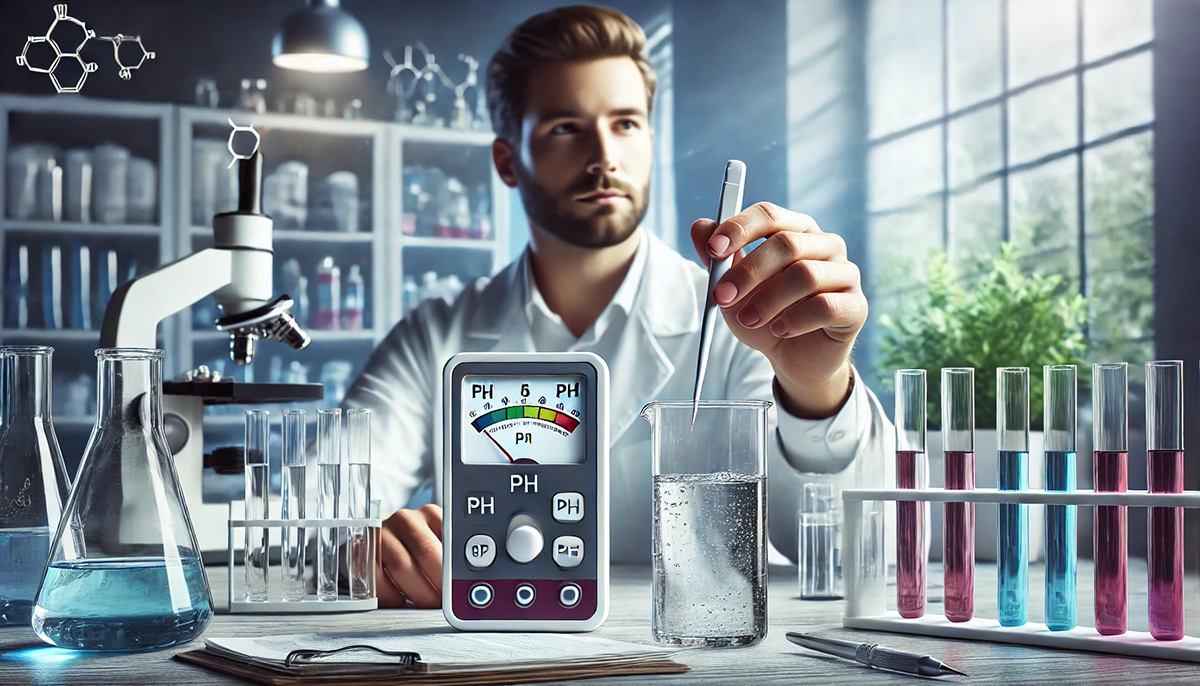pH-Wert regulieren: So senkst oder erhöhst du den pH-Wert von Wasser

Controlling the pH level of water is crucial for various applications, including agriculture, aquariums, swimming pools, and human consumption. Especially in irrigation and plant cultivation, maintaining an optimal pH level is essential, as it directly affects nutrient absorption. In this article, you will learn why you should regulate pH levels and which methods are suitable for effectively lowering or increasing pH.
Why Is pH Control Important?
The pH level indicates whether water is acidic, neutral, or alkaline. The scale ranges from 0 to 14, with a pH of 7 being neutral. Values below 7 are acidic, while values above 7 are alkaline. In agriculture and cannabis cultivation, precise pH control is essential because it directly impacts plant health and growth.
Benefits of an Optimal pH Level:
-
Improved Nutrient Absorption: Plants absorb key nutrients such as nitrogen, phosphorus, potassium, calcium, and magnesium most efficiently at a pH between 6 and 7. If the pH is too low or too high, nutrient deficiencies can occur.
-
Prevention of Nutrient Deficiencies or Toxicities: A low pH can lead to toxicity from elements like aluminum or manganese. A high pH reduces the availability of micronutrients such as iron and zinc.
-
Efficient Water Uptake by Plants: A stable pH level facilitates water absorption and prevents growth disturbances.
-
Adaptation to Different Soil Types: pH regulation can correct imbalances in various soil types, ensuring healthier plant development.
-
Reduction of Harmful Microorganisms: pH levels influence the growth of microbes and pathogens. A balanced pH helps maintain a healthy plant environment.
-
Higher Fertilization Efficiency: Fertilizers work best within an optimal pH range, ensuring proper nutrient solubility and plant uptake.
Regulating pH Levels: Methods for Lowering and Raising pH
There are various techniques for adjusting pH levels, depending on the intended use and water quality.
How to Lower pH Levels?
-
Using Chemical Acids
-
Highly effective but must be handled with care.
-
Regular pH testing is essential to avoid overcorrection.
-
Ideal for large-scale agricultural applications.
-
-
CO₂ Injection
-
Introducing carbon dioxide into water creates carbonic acid, which gently lowers pH.
-
A more environmentally friendly method, particularly useful for aquariums or irrigation systems.
-
-
Filtration with Special Materials
-
Certain filter media (e.g., peat, ion-exchange resins) can naturally lower pH.
-
A sustainable alternative to chemical acids, but requires ongoing maintenance.
-
-
Using Natural Solutions Like Vinegar
-
Suitable for small water volumes.
-
Less effective for large-scale applications.
-
How to Raise pH Levels?
-
Using Bases Like Potassium Hydroxide or Sodium Carbonate
-
These substances effectively increase pH levels.
-
Careful dosing is necessary to prevent overcorrection.
-
-
Adding Lime (Calcium Carbonate)
-
Commonly used in agriculture to neutralize acidic soils.
-
Provides a slow but sustainable increase in pH.
-
-
Increasing Aeration
-
In bodies of water, improving aeration can help stabilize pH.
-
Effective for ponds and hydroponic systems.
-
-
Filtration Through Alkaline Rocks (e.g., Dolomite Limestone)
-
An eco-friendly method for long-term pH regulation.
-
Particularly suitable for large water volumes.
-
Continuous pH Monitoring
Whether you need to lower or raise pH levels, regular monitoring with a pH meter is essential. Accurate testing ensures proper adjustments and prevents overcorrections. Well-regulated water quality enhances plant growth and ensures healthy yields.
Here you will find the best pH meters at Cannadusa.
Conclusion
The pH level of irrigation water directly affects plant growth. Choosing the right method for pH regulation depends on the water volume, intended use, and available materials. Whether using acids, bases, CO₂ injection, specialized filters, or natural alternatives, precise pH control ensures optimal water quality and healthy plants.
© 2024 - 2025 Cannadusa. Powered by Medusa Engineering GmbH
• Impressum • AGB • Datenschutz • Compliance
